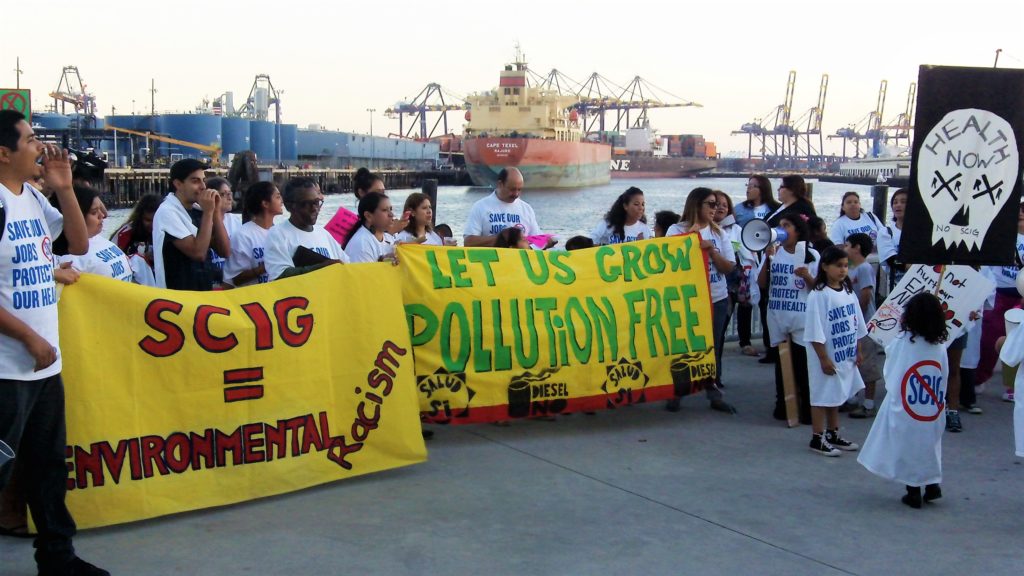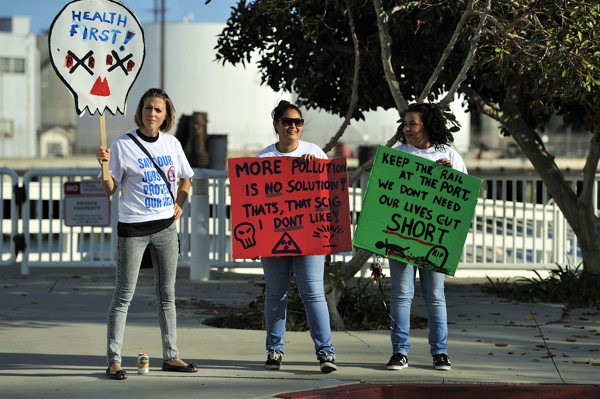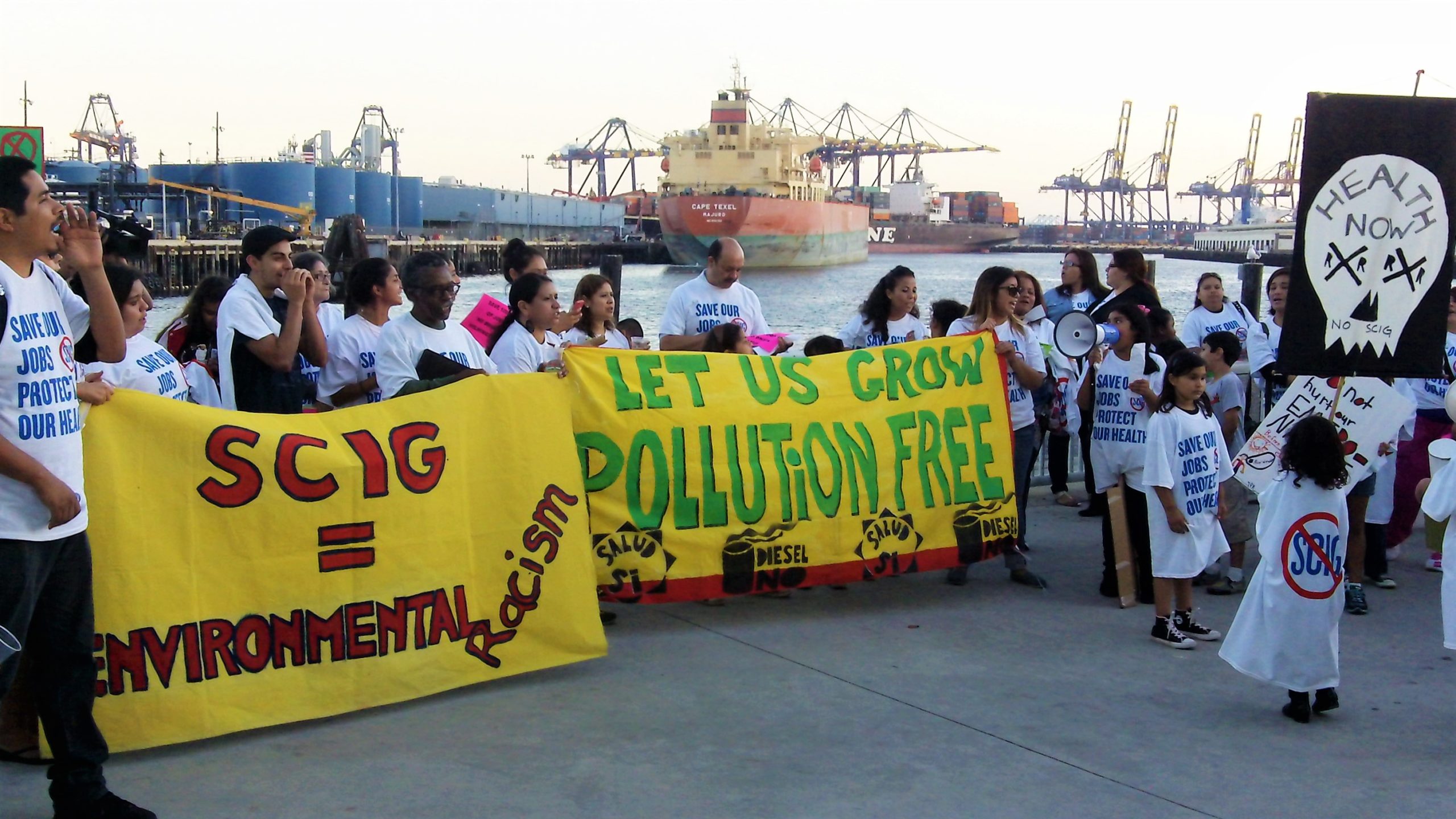The California Environmental Quality Act, protector of resources and communities through the consideration of environmental implications of proposed projects, is under attack. Representatives from industry and real estate development, and sometimes even Governor Jerry Brown, seek ways to weaken it, or to exempt their pet projects. While the law is far from perfect, it remains the gold standard of environmental protection in the US, and useful for communities near the Ports of L.A. and Long Beach in fighting a major railyard expansion.


How good environmental legislation goes wrong
An Excerpt By Jim Newton, Published in the Los Angeles Times
The California Environmental Quality Act is a valuable protector of this state’s resources. It guides planning by forcing agencies to consider the environmental implications of proposed projects. CEQA is also a woefully blunt instrument that thwarts economic growth and, perversely, can actually harm the environment. That’s exactly what’s happening with a proposed switching yard at the Port of Los Angeles.
The railway company BNSF has spent more than a decade working with the port to design a yard close to the port where trucks could deposit containers from ships onto the rail network. The new yard, called the Southern California International Gateway, would mean reduced traffic and air pollution in the region. Still some neighbors and environmental groups filed suit under CEQA to challenge the project’s environmental impact report.
Beware of Mr. Jim Newton’s fair-sounding editorial on reforming California’s Environmental Quality Act to make life easier for land developers and industry at the expense of the rest of us. He advocates for pushing a $500-million port railway yard called Southern California International Gateway into a working class neighborhood that includes a homeless veteran facility and seven schools that has suffered some of the dirtiest air in the state. — Jack Eidt, Director, Wild Heritage Planners
Late last month, Superior Court Judge Barry Goode reviewed the report and concluded that it came up short in a few areas. In Goode’s opinion, the EIR was an “impressive piece of work,” but it did not adequately consider the port’s potential growth or the yard’s implications for another nearby facility. He also found that it overlooked some potential noise and traffic impacts.
That may be true. BNSF disagrees, but these are difficult projections to make, and Goode’s 200-page ruling is detailed and comprehensive.
What’s indisputable is that the project has been excruciatingly studied. In the 11 years since it was introduced, the switching yard proposal has been the subject of public hearings and press scrutiny. It’s been reviewed and approved by the Los Angeles Board of Harbor Commissioners and the City Council. The EIR runs more than 5,000 pages. “It is clear,” Goode wrote in his decision, “that a great deal of careful thought has been given to the environmental impact of this project.”
If that’s not enough, what is?
These environmental laws exist to protect this type of community from this type of project, and even the Judge agreed the railroad had not done enough to protect the community. Hence, no dice BNSF. — Jack Eidt
httpvh://youtu.be/nG8TtFoNbJU
Dear Mr. Warren Buffett, from Long Beach for Health.
CEQA exists to protect the environment, and Goode’s blocking the BNSF project may indeed have a beneficial impact on the area next to the proposed rail yard. It will be less noisy, and have less traffic than if the yard were built.
But we’re not talking about pristine wilderness here; the yard is planned for an industrial site adjacent to a freeway. The nearest homes are across the freeway; the immediate neighbors are a tank farm and an industrial operations area. With or without the switching yard, this is a noisy, congested, polluted spot.
Mr. Newton concludes that, because the area near the port is already extremely polluted, BNSF should get carte blanche to pollute as much as it wants. To the contrary, it is the existing heavy pollution and its public health impacts on nearby neighborhoods that call for especially close scrutiny for this project under CEQA. In fact, Los Angeles has some of the dirtiest air in the state, and this project, as clearly stated in their environmental documents, would make regional air pollution worse. — Jack Eidt
STORY: Power, Influence, and Obfuscation: A Plan to Game the California Coastal Act


In fact, Goodes’ ruling will have a negative effect on the region’s environment, if not the neighborhood’s. Today, many trucks that pick up cargo at the port trundle their loads 24 miles up the 710 freeway to deposit them at a rail station. If the switching yard were built, those trucks would instead travel less than four miles. BNSF estimates the new yard would eliminate 1.5 million truck trips a year up and down the freeway. And since those trips cause traffic and air pollution, the project would reduce both.
That’s one of the troubles with CEQA: The judge is not empowered to consider the overall implications for the environment; he has to examine the micro implications raised in the lawsuit.
The proposed switching yard at the Port of Los Angeles is a bad project whose EIR was correctly rejected by a Superior Court judge. The plaintiffs suggested many feasible measures to reduce the air pollution, which were rejected by the Port and the railway company BNSF.
At the time the project was first proposed, the then-president of the Harbor Commission said that no diesel-powered trucks should be used to move containers from the docks to the rail yard. The Port reneged on that promise.
Plaintiffs in this case included the City of Long Beach, the Long Beach Unified School District, the South Coast Air Quality Management District and the state attorney general. Does that sound like a bunch of NIMBYs?
The argument that the rail yard will reduce truck trips on the 710 Freeway is spin. Transportation agencies are in the early stages of a multi-billion-dollar project to allow more trucks to access the ports. — Noel Park, LA Times


Photo by Jeff Gritchen / LB Press-Telegram
Armed with a recent Harbor Department report, Andrea Hricko, a professor of preventive medicine at USC, said the benefits of reducing truck traffic on the 710 could be temporary because of the increasing use of “transloading,” in which goods in 40-foot cargo containers are consolidated into 53-foot containers by freight companies before being taken to Hobart and other yards. — LA Times
And then there’s L.A.’s economy. BNSF says it would take 1,500 construction workers to build the facility. Once operating, again according to BNSF, the yard would spur enough economic growth to add 22,000 direct and indirect jobs to the region — ranging from the people actually running the 24-hour-a-day facility to those involved in goods movement across Southern California. Even if the company is being overly optimistic, the new yard is likely to produce thousands of jobs and millions of dollars in tax revenue to the local, state and federal governments.
These same arguments were used to overthrow staff leaders at the Coastal Commission and Air Quality regulators (SCAQMD). Governor Jerry Brown, avowed climate crusader, is one of their leading anti-environmentalists. CEQA could use reform to enable denser projects where public transit works. Yet Mr. Newton doesn’t make that case. Just say no to his brand of CEQA reform. — Jack Eidt
To read the entire op-ed, see the Los Angeles Times
Jim Newton, a former editor and columnist for The Los Angeles Times, is the editor of UCLA’s Blueprint magazine.










I appreciate this article’s dissection of a seemingly good analysis in the LA Times. Environmental law can be confusing.
Pingback: Jerry Brown Responsible for Coastal Commission Coup | WilderUtopia.com